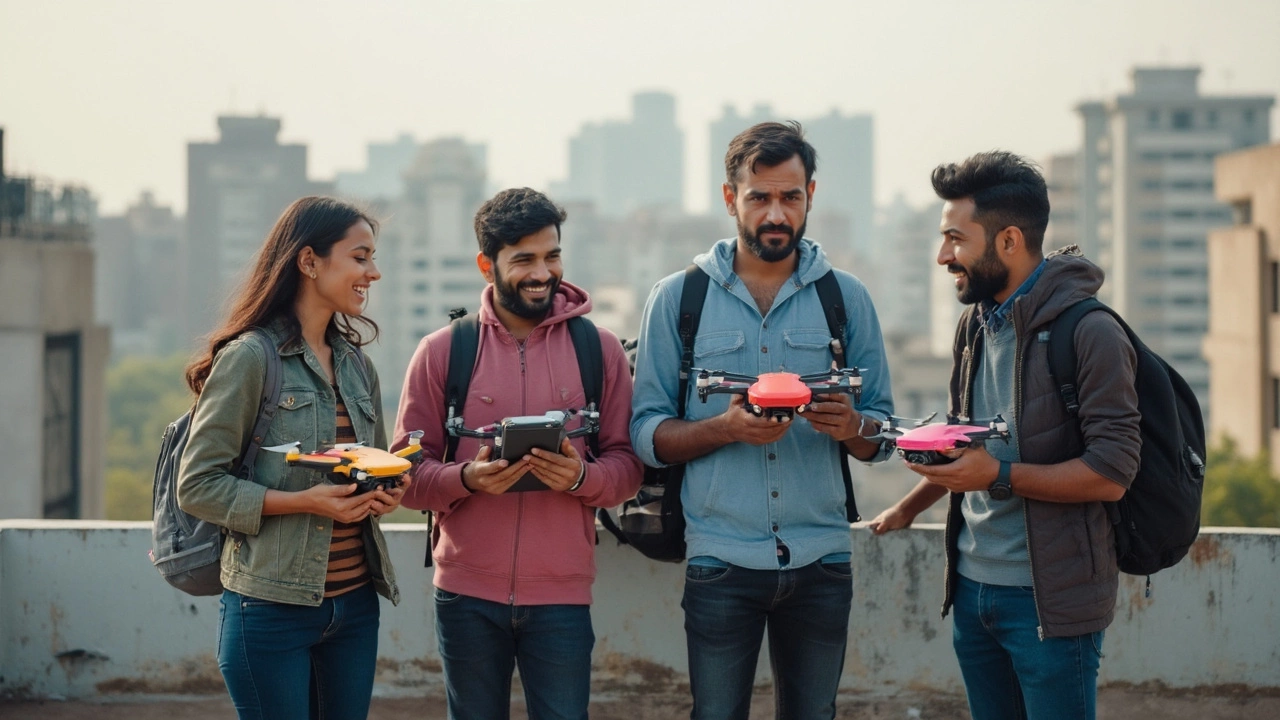Drone Rules India – What You Must Know in 2025
If you’re thinking about taking your drone out for a spin over Mumbai or anywhere in India, the first question is always the same: Can I fly it legally? The answer depends on a handful of clear rules set by the DGCA. This guide cuts through the jargon and gives you the practical steps to stay on the right side of the law.
Who Needs a Drone Licence?
In India, any drone that weighs more than 250 grams requires a licence, no matter if you’re a hobbyist or a professional. The DGCA classifies drones into three categories:
- Nano drones – up to 250 g. No licence needed, but you still must follow basic safety rules.
- Micro and Small drones – 250 g to 2 kg. You need a Unmanned Aircraft Operator Permit (UAOP) and a remote pilot licence.
- Medium and Large drones – over 2 kg. Full UAOP, registration, and a certified training course are mandatory.
The process is online: create an account on the Udaan portal, upload your ID, pay the fee, and wait for approval. Most first‑time pilots get a licence within a week.
Key Restrictions and No‑Fly Zones
Even with a licence, you can’t just fly anywhere. The DGCA has mapped out several restricted areas:
- Airports and heliports – a 5 km radius around the runway is off‑limits.
- Military zones and government buildings – marked as permanent no‑fly zones.
- National parks and wildlife sanctuaries – drones can disturb animals, so they’re banned.
- Urban crowded events – if there’s a large gathering, you need a special event permit.
To check if your chosen spot is clear, use the “Udaan” map or the “Drone Zone” app. It shows live updates and lets you request temporary clearance for specific projects, such as a wedding shoot or a real‑estate video.
Besides location rules, there are altitude limits. For most drones, you can’t exceed 120 meters (400 feet) above ground level without special permission. Flying higher requires a separate “Height Clearance” from the DGCA.
Now that you know who needs a licence and where you can fly, let’s talk about safety. Always keep your drone within visual line of sight, never fly over people who haven’t given consent, and carry a spare battery to avoid sudden power loss. If you’re using a drone for a commercial job – like the “Drone Licence Rules in India” article on our blog – make sure you have a written contract that states you’ll follow all regulations.
Got doubts about a specific scenario? Our post “Can I Take My DJI Drone to India?” walks you through customs, import duties, and what paperwork to keep handy at the airport. And if you’re planning a spectacular night show, check out the “Drone Show Laws in India” article for the exact permits you’ll need.
Bottom line: the 2025 drone rules in India aim to keep skies safe while still letting enthusiasts capture amazing footage. Register, get your licence, respect no‑fly zones, and always fly responsibly. Follow these steps, and you’ll enjoy hassle‑free flights over the city, the sea, or the countryside without risking a fine or a confiscated drone.
